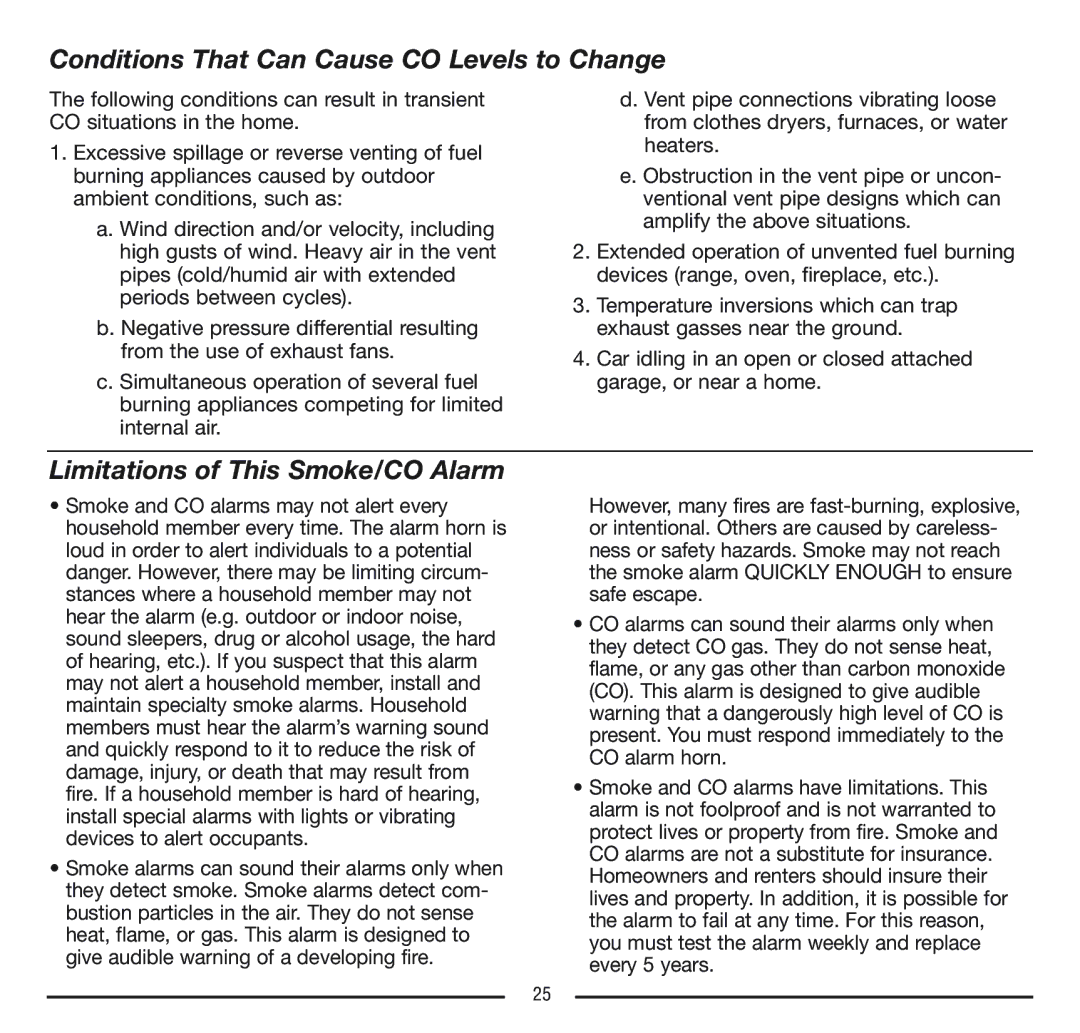
Conditions That Can Cause CO Levels to Change
The following conditions can result in transient CO situations in the home.
1.Excessive spillage or reverse venting of fuel burning appliances caused by outdoor ambient conditions, such as:
a.Wind direction and/or velocity, including high gusts of wind. Heavy air in the vent pipes (cold/humid air with extended periods between cycles).
b.Negative pressure differential resulting from the use of exhaust fans.
c.Simultaneous operation of several fuel burning appliances competing for limited internal air.
d. Vent pipe connections vibrating loose from clothes dryers, furnaces, or water heaters.
e. Obstruction in the vent pipe or uncon- ventional vent pipe designs which can amplify the above situations.
2.Extended operation of unvented fuel burning devices (range, oven, fireplace, etc.).
3.Temperature inversions which can trap exhaust gasses near the ground.
4.Car idling in an open or closed attached garage, or near a home.
Limitations of This Smoke/CO Alarm
•Smoke and CO alarms may not alert every household member every time. The alarm horn is loud in order to alert individuals to a potential danger. However, there may be limiting circum- stances where a household member may not hear the alarm (e.g. outdoor or indoor noise, sound sleepers, drug or alcohol usage, the hard of hearing, etc.). If you suspect that this alarm may not alert a household member, install and maintain specialty smoke alarms. Household members must hear the alarm’s warning sound and quickly respond to it to reduce the risk of damage, injury, or death that may result from fire. If a household member is hard of hearing, install special alarms with lights or vibrating devices to alert occupants.
•Smoke alarms can sound their alarms only when they detect smoke. Smoke alarms detect com- bustion particles in the air. They do not sense heat, flame, or gas. This alarm is designed to give audible warning of a developing fire.
However, many fires are
•CO alarms can sound their alarms only when they detect CO gas. They do not sense heat, flame, or any gas other than carbon monoxide (CO). This alarm is designed to give audible warning that a dangerously high level of CO is present. You must respond immediately to the CO alarm horn.
•Smoke and CO alarms have limitations. This alarm is not foolproof and is not warranted to protect lives or property from fire. Smoke and CO alarms are not a substitute for insurance. Homeowners and renters should insure their lives and property. In addition, it is possible for the alarm to fail at any time. For this reason, you must test the alarm weekly and replace every 5 years.
25
